Chocolate Tempering Made Easy
Working with chocolate is a sometimes-demanding and very rewarding process. In this post, we’ll address tempering methods in the context of making chocolate bark. Chocolate bark is a simple application for a first-time chocolate project that is a great way to get your feet wet. The bark doesn’t involve any molds or dipping techniques—and it’s delicious! Whenever working with chocolate it must be tempered; we’re about to simplify the science and make it easy for you. Just keep an instant-read thermometer handy for spot checking temperatures. For this project we’re using a Classic Super-Fast® Thermapen®.
Why Temper?
Chocolate just out of the wrapper is shiny with a pleasant snap—it’s in perfect temper. If you melt the chocolate and work with it without tempering, it will take a long time to set up, will not be shiny, and won’t snap; rather, it may be flexible, dull and brittle.
Chocolate work is really very scientific; let’s break it up into basic pieces that are easy to understand:
• Chocolate contains cocoa butter that is made up of 6 different types of fat crystals (forms 1-6).
• Each form has a different density, level of stability, and melting point.
• The only crystal that is stable enough to achieve the desired shine and snap is form 5 (beta crystals).
• Form 5 has a higher melting point, so it won’t melt immediately on your fingers. The beta crystals are very stable—their structure will change little over time, and are very small—resulting in a shiny product with a nice snap.
How to Temper:
Tempering involves 1) melting all of the fat crystals, 2) cooling under agitation to ensure the formation of small crystals by way of seeding or tabling (tabling is a method typically only used by professionals) the melted chocolate to encourage the formation of the needed beta crystals. 3) The chocolate is then very gently rewarmed to bring it up to a workable consistency without breaking the stable beta crystalline structure. The chocolate tempering video below from our friends at Monarch Media helps to visualize this process.
The Seeding Method:
1. Melt: Scale the needed amount of chocolate (buttons, coins, or chopped) into a very clean, dry stainless steel bowl. Set aside about 1/4-1/3 of the chopped chocolate for seeding. Prepare a double-boiler by filling a saucepan about 1/4-1/3 with water. Bring the water to a boil and turn off the heat. Place the bowl of chocolate over the hot water bath to gently melt, stirring with a rubber spatula as it melts. Keep the chocolate over the hot water bath until it reaches the proper melting temperature as listed in the table below.
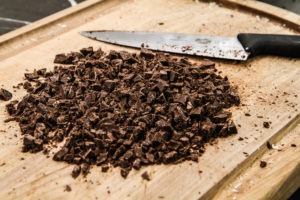
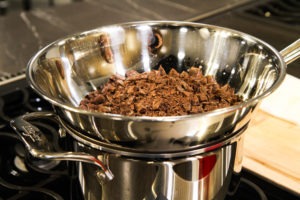
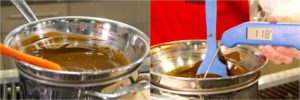
2. Cool: Remove the bowl of melted chocolate from the heat and wipe off the condensation from the bottom of the bowl. Add the remaining chopped chocolate to the melted chocolate to cool and seed the chocolate with the stable beta (form 5) fat crystals, stirring constantly. Add enough chopped chocolate to reduce to the proper cooling temperature.
3. Rewarm: Return the bowl of chocolate to the hot water bath and stir constantly as the temperature rises slightly. This will only take a few seconds. Keep an eye on the temperature with spot checking. If the temperature exceeds 90ºF (32ºC), the temper will be broken. Once the rewarming temperature is reached, immediately remove from the heat.
• Test for proper temper before proceeding by dipping the edge of a metal spoon or knife into the chocolate and set it aside. If proper temper has been reached it will set up quickly without any streaks. If not tempered, the chocolate will never seem to set up, or it will have gray or whitish streaks once it does.
The Tabling Method:
If you’ve ever watched someone tempering chocolate on television or in a movie, chances are they were mearing it around on a marble slab. This method is called table tempering. It can be more difficult, but it is fun and impressive if anyone is watching you work!
In tabling, melted chocolate is agitated with palate knives (and often stainless steel putty knives) on a marble slab to very quickly cool it down (stabilizing the fat crystals), then rewarmed to a workable consistency—all while very closely tracking its temperature. Tabling is the method of choice for pastry chefs and chocolatiers for its quick results. If you have granite (marble is ideal, but granite surfaces work very well too) or marble countertops, or have a slab of either, give tabling a try!
Why Marble?
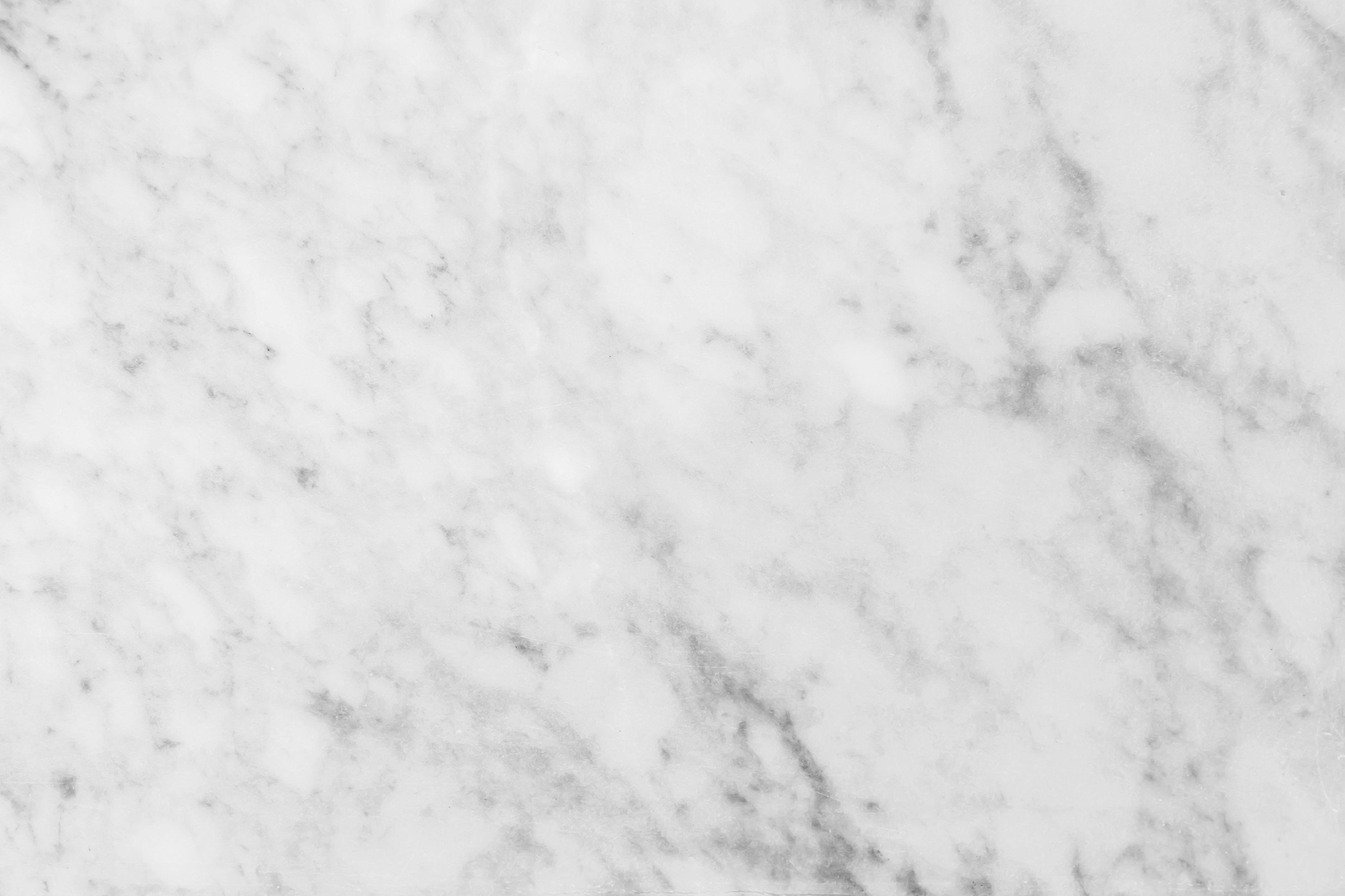
Why is marble the surface of choice for chocolate and sugar work? Whenever you touch a marble surface with your hand, or walk across a marble floor, have you noticed that it feels much colder than a wood floor in the same room? Well, the marble is the same temperature as anything else in the room. Marble is an incredibly dense stone, has high thermal mass (the ability of a material to absorb and store heat energy), and great specific heat capacity (the amount of heat energy required to change a unit mass of a substance by one degree in temperature). Simply stated, heat energy transfers very quickly to marble, and it takes a great amount of heat energy to increase its temperature. When you touch marble you’re not sensing its cool surface temperature, your own heat energy is transferring quickly to the marble cooling YOU down. Take a minute and let that sink in!
Apply this principle to a thin layer of melted chocolate, and it’s easy to see why marble is the go-to surface to cool it down. The heat energy from the chocolate is quickly transferring to the marble reducing its temperature, with minimal temperature change in the marble. This illustrates how heat and temperature are not the same thing.
Tabling
Step 1: Melt the chocolate over a hot water bath (between 115-120°F [40-43°C] for dark chocolate), stirring occasionally. Spot check your temperature with an instant-read thermometer—we used a Thermapen. Once you have reached your melting temperature, remove from the heat and wipe any condensation with a clean, dry cloth. All surfaces and tools must be completely dry when working with chocolate.
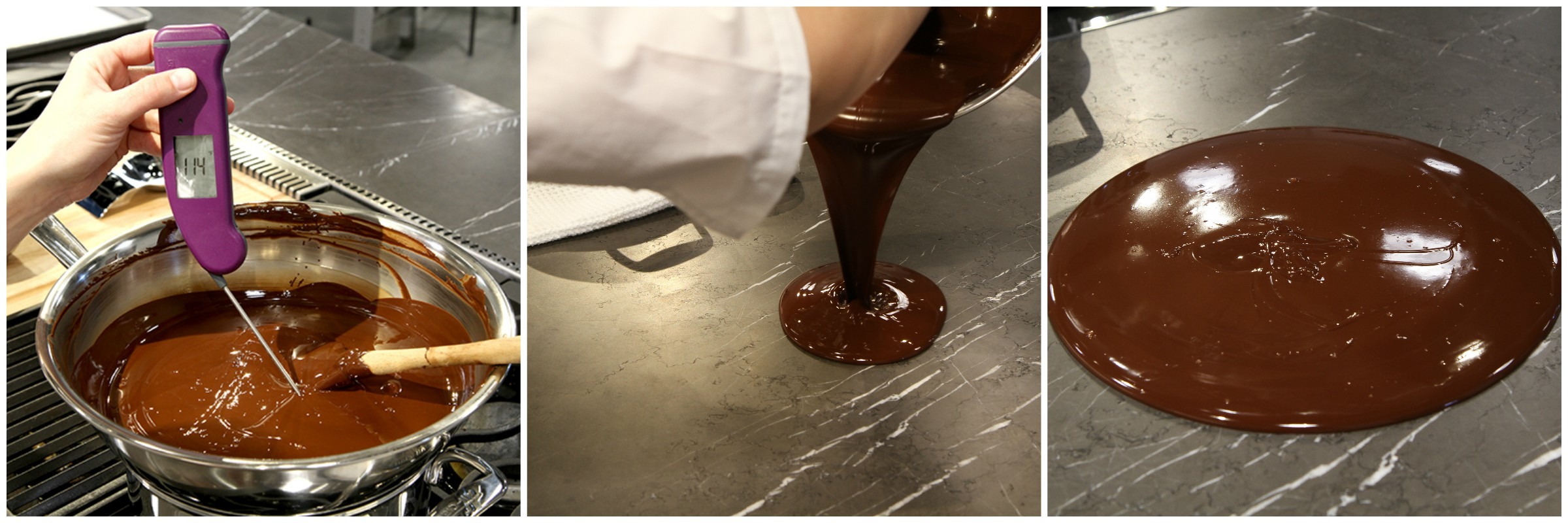
Step 2: Pour out about 2/3 of the melted chocolate onto a very clean marble surface, and reserve the remaining 1/3 in the bowl (do not set the bowl down directly onto the marble surface, the chocolate will begin to set up rapidly and it needs to maintain its temperature).
Step 3: Using a palette knife and scraper, spread out the melted chocolate into a thin layer over the marble, and scrape the chocolate pulling it back into the center of the chocolate, cleaning off the scraping knife with the palette knife in your other hand. Continue the spreading and scraping motions until the melted chocolate begins to thicken. It’s critical to keep the chocolate in constant motion while tempering to properly stabilize the cocoa butter for form 5 fat crystals.
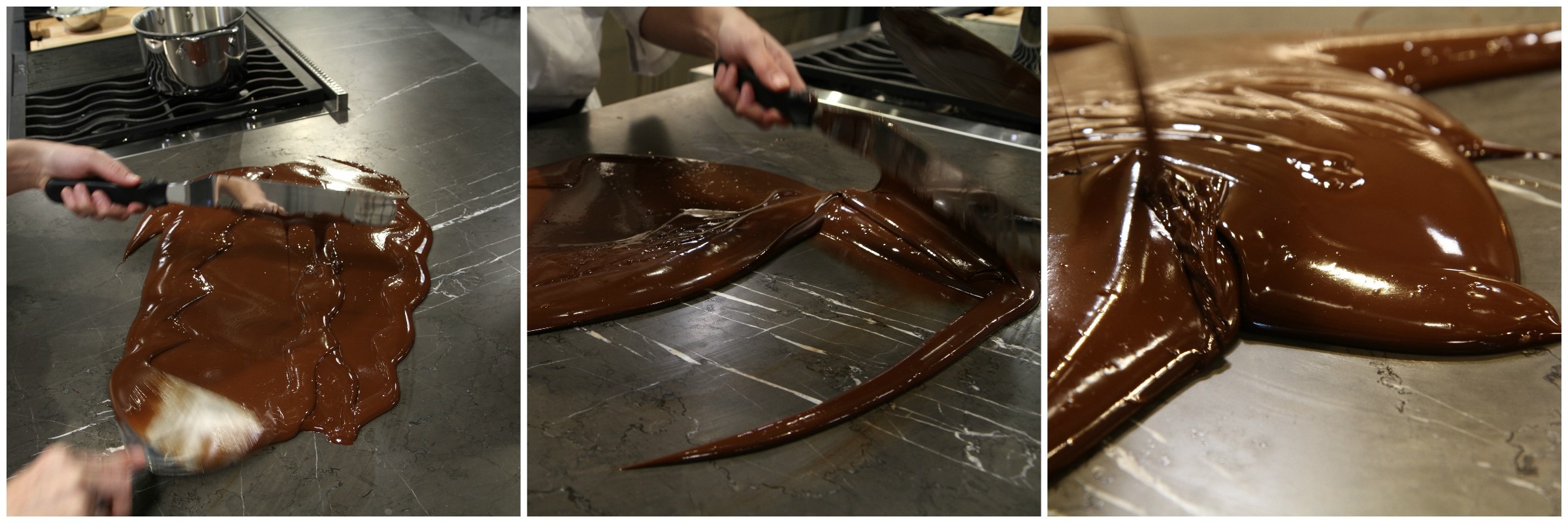
Quickly check the temperature of the chocolate. Dark chocolate should be cooled to about 84°F (29°C). If it cools down below that temperature it’s ok as long as solid chunks haven’t begun to form yet—work quickly. We always recommend using an instant-read thermometer when tempering chocolate; but many professional chefs and chocolatiers use an infrared thermometer like the Food Safety thermometer at this stage in tempering, as pictured below. An infrared thermometer is not necessary, but this is a case where it is considered acceptable to use a surface temperature reading because the melted chocolate is in a very thin layer and has been in constant motion.
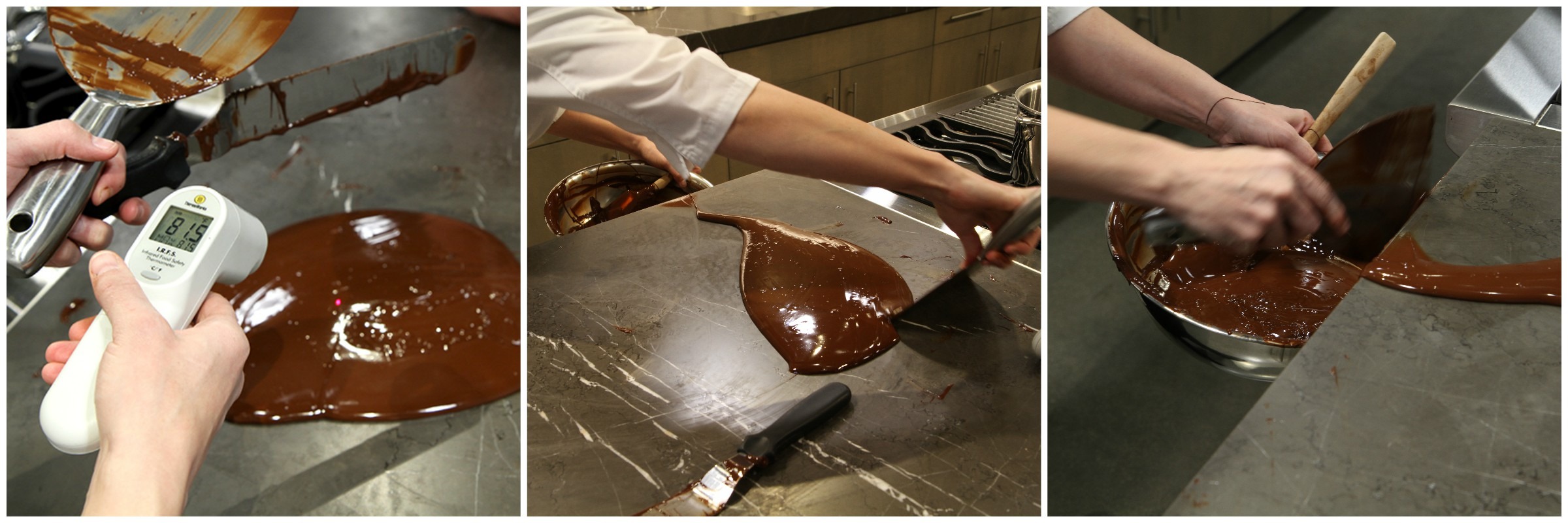
Step 4: Once you have determined the chocolate has cooled down to its appropriate temperature, very quickly scrape (the chocolate will set up on the marble if not scraped quickly enough) the chocolate to the edge of the marble, back into the bowl with the remaining 1/3 melted chocolate. Stir vigorously with a spatula. Spot check the temperature with an instant-read thermometer (the surface temperature as read by an infrared thermometer will not give an accurate reading at this point). If the chocolate needs to rewarmed slightly, place over a hot water bath for just a few seconds. If the chocolate’s temperature exceeds 91°F (33°C), it will lose its tempered structure and you’ll need to start the process over again.
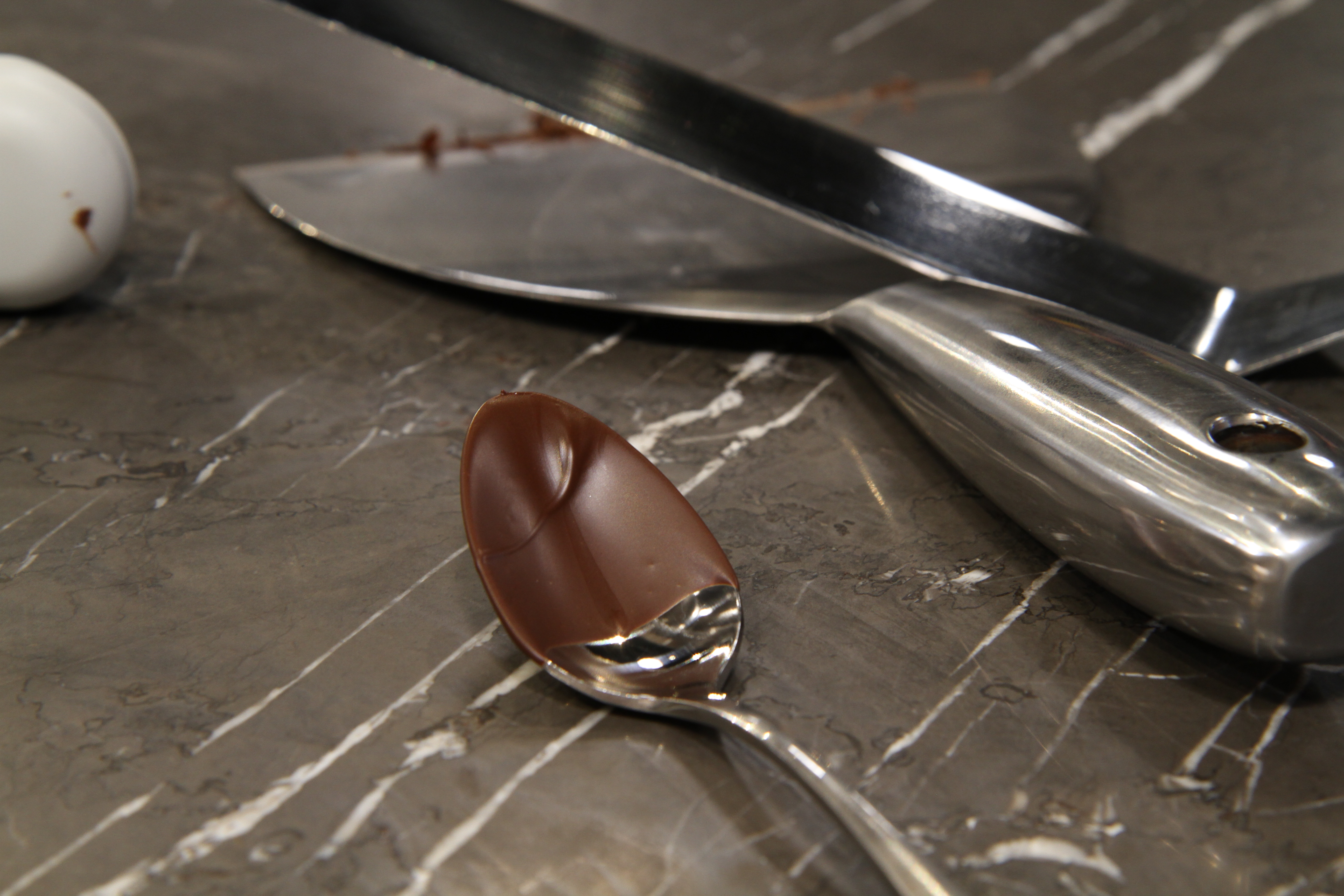
Step 5: Test to be sure proper temper has been reached by dipping the edge of a spoon or knife into the chocolate and allow to set. If tempered it will set up quickly without any streaking. At this point, proceed with using your tempered chocolate. Maintain proper temperature while working with the chocolate by occasionally spot checking the temperature, and returning the bowl over the hot water bath to warm it. Keeping chocolate in temper while working with it is a dance.
Kitchen Tip:
Take great care to keep water away from the chocolate. Even one drop of water can cause the chocolate to seize.
Critical Chocolate Temperatures

Now that your chocolate is perfectly tempered, you’re ready to continue with making peppermint bark! We used a peppermint bark recipe from CIA Taste of the Culinary Institute of America.
Using the recipe follow these easy steps:
1. Temper white chocolate and spread onto a parchment-lined 10×15-inch sheet pan. Smooth with an offset spatula to level out the chocolate before it sets.
2. While white chocolate is setting up (the chocolate will likely set up immediately, but don’t allow it to sit longer than an hour before pouring the dark chocolate), temper dark chocolate. Mix the *peppermint oil into the dark chocolate, and spread over the white chocolate, smooth and level just as with the white chocolate. Sprinkle crushed peppermint candy on top of the dark chocolate before it sets.
3. Allow to sit at room temperature for at least an hour, then break into shards.
*Peppermint oil must be used, not extract. Extract will cause the chocolate to seize.
Get Creative!
Use this recipe as a guideline to create your own variations. For example, omit the peppermint oil, sprinkle toasted chopped nuts, dried fruit, coconut, seeds, spices, rice crispies, crushed Oreos, pretzels, or marshmallows on top. Use a topping on the white chocolate layer, then pour the dark chocolate over it and use a different finishing topping. The possibilities are endless!
We made another bark with plain tempered white chocolate and topped it with dried cherries and roasted pistachios. Yum!
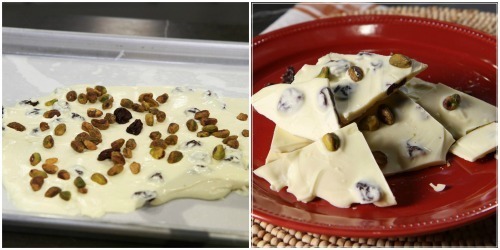
Now you know why tempering is important, and that the process is probably easier than you thought. With an accurate instant-read thermometer, it’s nearly foolproof. By spot-checking temperatures with your Thermapen along the way, you won’t lose your temper this holiday season.
For more, look at our post on using tempered chocolate to make chocolate covered strawberries.
Shop now for products used in this post:
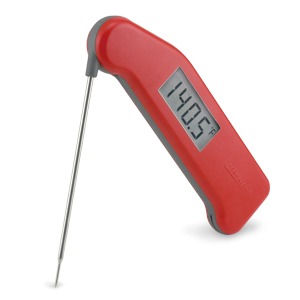
Classic Thermapen


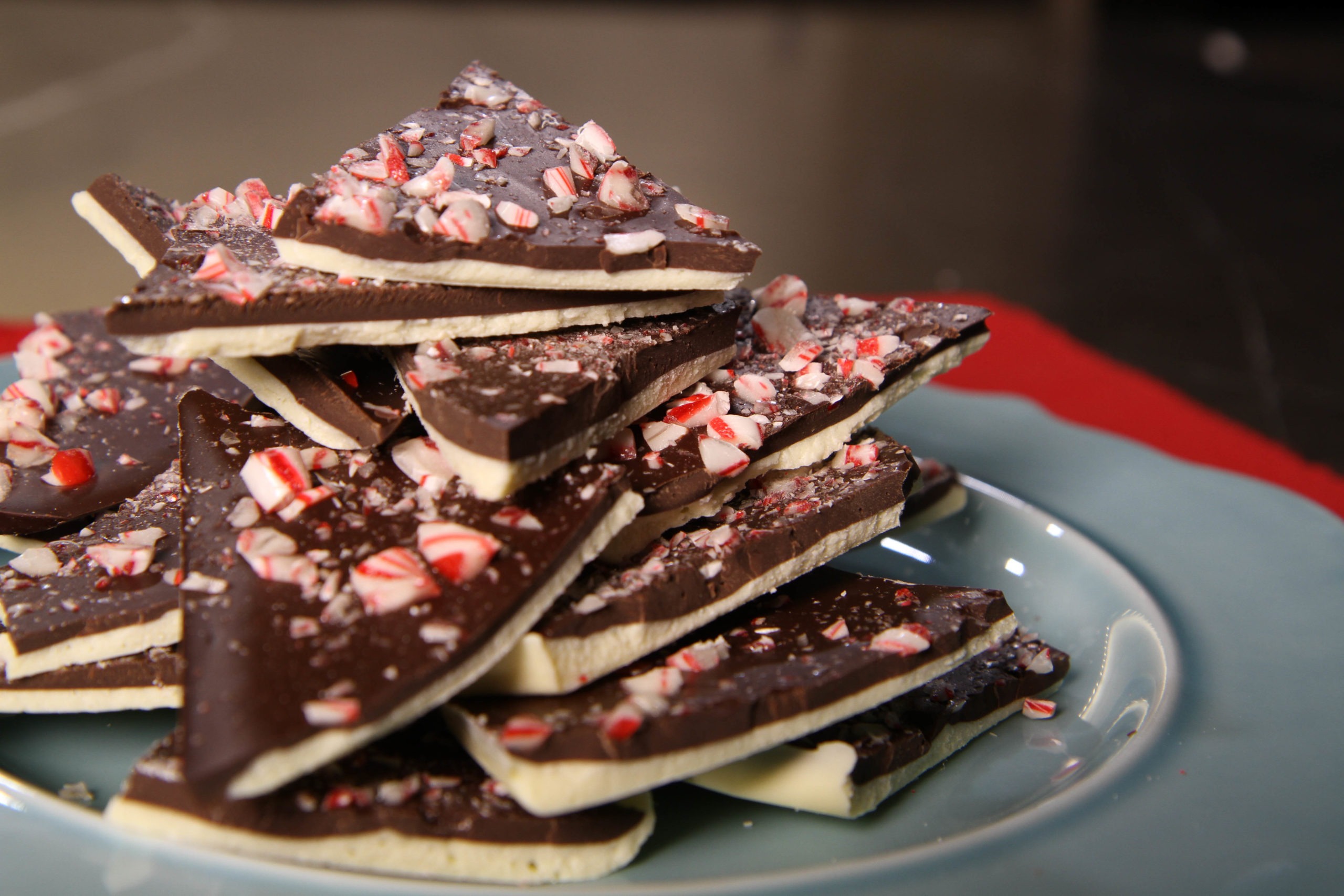

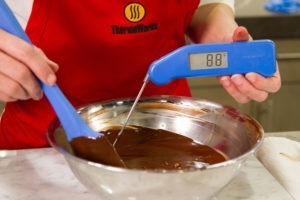
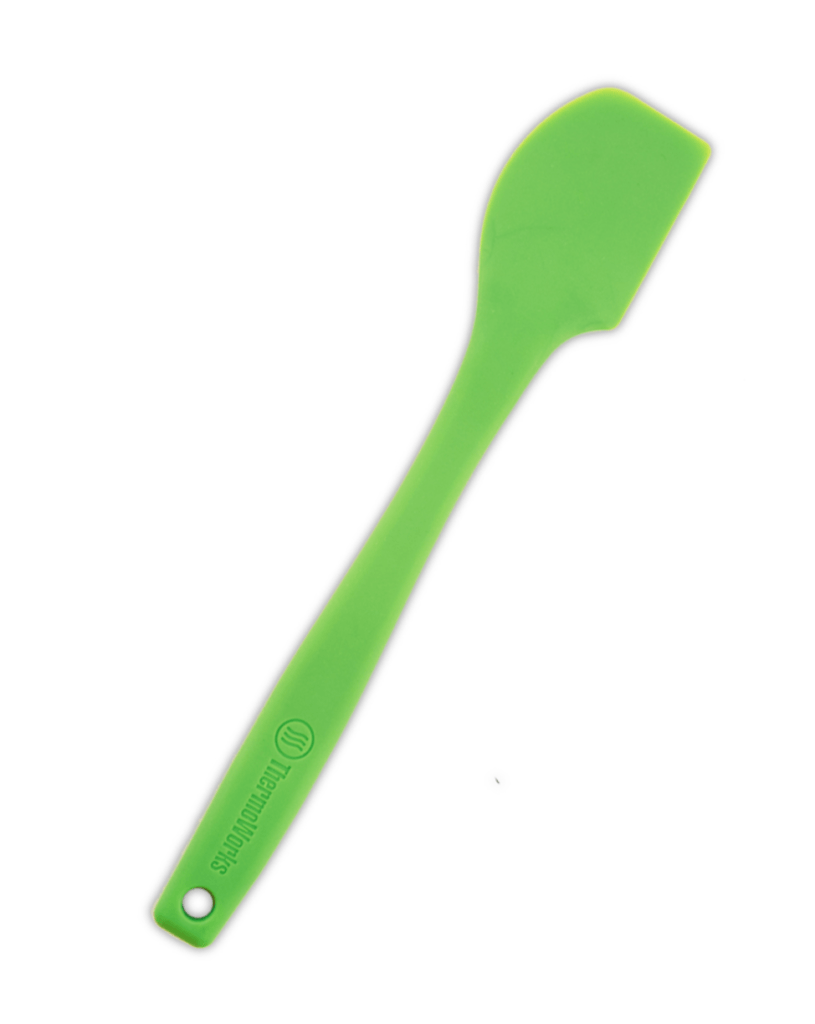
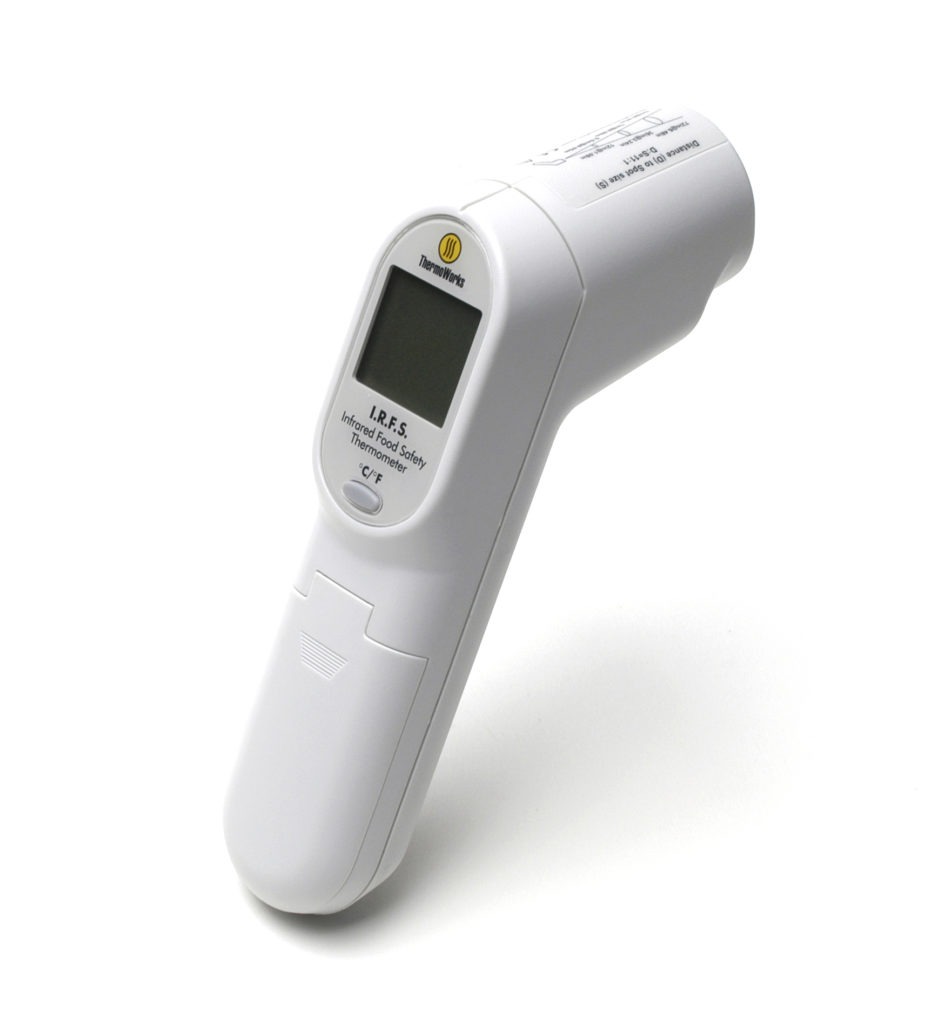
Are the melting, cooling and re-warming temperatures the same at a higher altitude (just under 5000 feet)?
Patti,
No, you shouldn’t have to make any adjustments to the cooling and re-warming temperatures. Chocolate tempering doesn’t involve any water or leaveners–which are the major finicky culprits with high altitude cooking. We’re at about 4,600 feet where we are here in Utah, and we don’t adjust for altitude with out chocolate tempering. Thank you for your question, and have fun with your chocolate!
-Kim
Thanks for the information. I have been wanting to temper chocolate for about one year, now I can start. Thanks…
Thanks for the information. I have been wanting to temper chocolate for about one year, now I can start. Thanks…
Samuel,
I hope it all goes well, have fun!
-Kim
It took so long to get the melted chocolate cooled down to 84′ that it was starting to solidify. That can’t be right, can it? Could my brand new Thermopen be inaccurate?
Kim,
Thanks for the response. About how long is it likely to take to cool down one pound of chocolate from 115 to 84?
Sheryl,
It depends on how much seeded chocolate is added, and the ambient temperature of the room. It could be around 5 minutes, and may seem to take forever! Just keep stirring so the fat crystals form correctly.
-Kim
Sheryl,
At 84ºF it should be beginning to set up–but only to a point of causing the chocolate to begin to thicken enough that it’s difficult to work with.
-Kim
Thanks, I’ll keep trying.
My peppermint bark didn’t stick together well. When I cut it, most of the dark and the white layers separated. What did I do wrong?
Kim,
It was well under an hour. Just long enough to melt – and hopefully temper – the white chocolate. Could there be anything else that could cause the white chocolate not to adhere to the dark layer?
Sheryl
Thanks, I’ll keep trying.
Sheryl,
How long did your first layer of chocolate set before you poured the second on top? If the bottom layer was left to set up more than an hour that can happen.
-Kim
Sheryl,
I’ve done a little bit of research, and it seems that there are a few factors that may affect the chocolate layers sticking together or not. 1) Achieving proper temper with both chocolates without overheating either during the initial melt. 2) The bottom layer being too set before pouring the second layer. 3) Some people refrigerate their bark to “force set” it, and this step often causes separation. 4) The type of chocolates used. High quality chocolate has more cocoa butter, and works better than others, and both chocolates need to be of the same quality.
I hope this helps you out, and that you’re able to have a successful peppermint bark!
-Kim
Please check for a possible typo in the temp table. I think the dark chocolate temp is 46-49C, not 46-39C. Thanks.
Sue,
That is indeed a typo–thank you for catching it!
-Kim
Thanks Kim. I must have overheated the chocolate as none of the other causes apply. I’m using Merkens chocolate for both white and dark and I didn’t put the first layer in the fridge. Immediately I poured the first layer, I started to melt the second layer so it wasn’t very long before I poured the second layer. I’ll keep trying!
Sheryl,
It sounds like you have all of your bases covered with the method and using a good quality chocolate. Hopefully your next batch works perfectly!
-Kim
Has anyone tried the agitation in a SS Kitchen Aid bowl with a paddle attachment?
Thank you
Amy